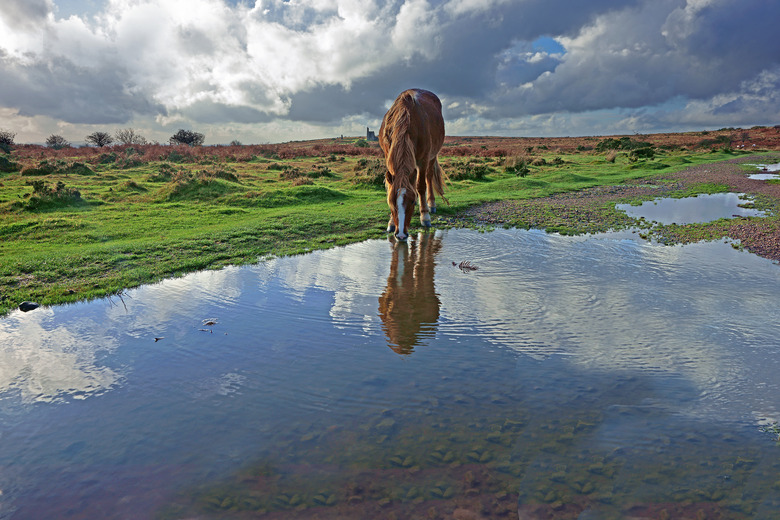Types Of Water Bodies
There are several varied types of bodies of water. These waters may be fresh water or salt water and be moving or contained. Often the size of these bodies of water set one apart from the other, as can their borders. In some cases, the vegetation that thrives within them distinguish one from another.
Large Salt Water
Large Salt Water
There are three types of larger bodies of salt water. Oceans are the biggest, with two thirds of the planet's surface covered by the ocean water. Oceans are large enough to surround continents. A sea is a large area of water that in many cases connects to an ocean, such as the Caribbean Sea that lies to the southeast of the United States. In some instances, a salt-water sea has land on all sides of it, such as the Caspian Sea. Land will enclose partially a gulf, which contains part of an ocean or a sea. The Gulf of Mexico to the south of the eastern portion of the United States is a prime example.
Smaller Salt Water
Smaller Salt Water
Bays are similar to a gulf in that land also will partly enclose them, but they are smaller. Coves, where the land encompasses the water most of the way in a horseshoe shape, contain less water than a bay. A cove can exist in a lake as well as an ocean or sea. In salt water, a channel is the type of water body that joins two bodies of water together, such as the English Channel. The fjord, which occurs along coastlines of many countries such as Norway and Canada, is a narrowed inlet of sea water that has very high cliffs on both sides. Lagoons typically are quite shallow compared to the rest of an area of salt water and are next to the coast. Lagoons sometimes have a sandbank or low-lying stretch of land between themselves and the main ocean so they lack waves. A sound, such as Long Island Sound off the coast of Connecticut, runs parallel to the shoreline and these wide bodies of water normally separate an island from the mainland. The narrow threads of water that join larger waters to each other are straits.
Moving Fresh Water
Moving Fresh Water
Brooks, also called creeks, are the smallest moving fresh water bodies of water. They frequently flow into larger streams, which in turn dump into rivers. Rivers in the majority of cases empty into an ocean, sea or lake. The smaller flowing waters that go into larger ones at all levels are tributaries. Rainfall and snowmelt contribute to these various fresh water bodies. An estuary forms where a river does meet the sea or the ocean. The water is a combination of fresh and salt water and is often brackish.
Lakes and Ponds
Lakes and Ponds
A lake is normally full of fresh water and surrounded on all of its side by land. The great lakes in the northern U. S. are much larger than the average lake. Some lakes however are salt water bodies of water, such as Utah's Great Salt Lake. Ponds, found inland, are smaller in area than lakes, but no set standard exists that differentiates a large pond from a small lake.
Wetlands
Wetlands
Swamps, bogs and marshes are also bodies of water that differ mostly in the types of plants that grow within them. A swamp contains water within its boundaries and can support various woody plants like shrubs and trees. Swamps have depths of a couple inches up to a foot and in the dry season sometimes have little or no water. Bogs exist in colder climates and contain layers of peat and moss, making them spongy to the touch. Marshes have strong stemmed plants like cattails in them; marshes may be freshwater or saltwater.
References
Cite This Article
MLA
Lindell, John. "Types Of Water Bodies" sciencing.com, https://www.sciencing.com/types-water-bodies-5387178/. 22 November 2019.
APA
Lindell, John. (2019, November 22). Types Of Water Bodies. sciencing.com. Retrieved from https://www.sciencing.com/types-water-bodies-5387178/
Chicago
Lindell, John. Types Of Water Bodies last modified March 24, 2022. https://www.sciencing.com/types-water-bodies-5387178/
